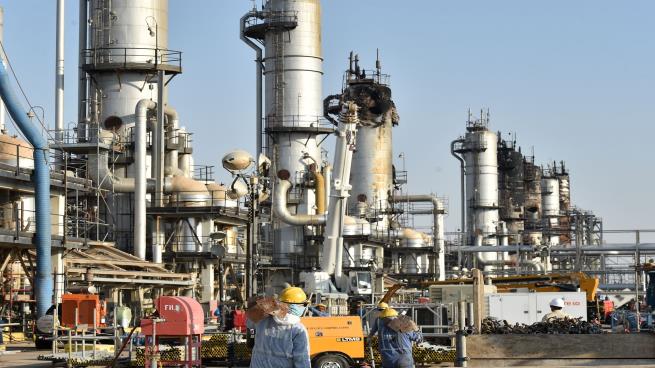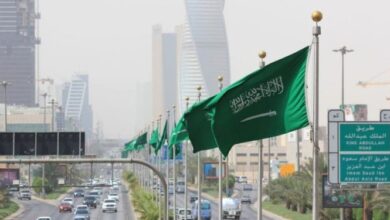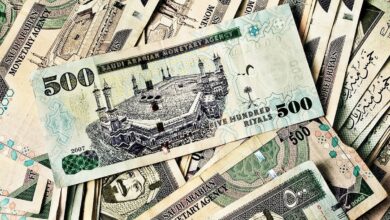Falling oil revenues increase Kingdom’s economic crises

Sharp decline in oil revenues in the Kingdom carries more challenges to its economy, which has been strained due to the failure of the Saudi regime and its internal and external policies.
Data issued by the General Authority for Statistics in the Kingdom showed a sharp decline in oil revenues during the third quarter of this year 2019, which witnessed attacks on major installations of Aramco in the east of the Kingdom.
The data indicated that the value of oil exports decreased by 21.5 percent year on year, during the period from July to the end of September, recording 181.3 billion riyals ($48.3 billion), compared to 230.9 billion riyals in the same quarter of last year 2018.
In September alone, exports amounted to 58.1 billion riyals, compared to 77.9 billion riyals in the same month last year, a decrease of 25.4 percent. The share of oil in total exports also declined from 80.1 percent in September 2018 to 76.1 percent in the same month this year, losing 4 percent year on year.
On September 14, 2019, Riyadh announced the control of two fires that occurred at the Aramco and Khurais facilities of Aramco, east of the Kingdom, as a result of targeting them with drones, which were adopted by the Houthi group in Yemen.
The attacks had stopped the supply of crude oil around 5.7 million barrels per day, or about 50 percent of Aramco’s production, in addition to the two billion cubic feet of associated gas.
The Saudi regime announced, three days after the attack, that crude supplies had returned to normal levels as they were before the attacks, by withdrawing from stocks.
According to the Kingdom’s budget document, Saudi Arabia’s average oil production in the first 10 months of 2019 was about 9.8 million barrels per day.
The Saud regime recently announced the budget for next year 2020, with an estimated spending of 272 billion dollars, compared to expected revenues of 222 billion dollars, indicating a deficit of 50 billion dollars, while the deficit in the current year budget is estimated at 35 billion dollars.
And 2019 is the fifth consecutive year of deficits in the Saudi budget due to the decline in oil prices from their mid-2014 levels.
The Kingdom’s economy is expected to register weak growth by the end of this year, as the government estimates that real GDP growth is 0.4 percent, supported by non-oil output growth.
GDP data showed a growth of 1.1 percent in the first half of 2019, supported by the growth of the non-oil sector by 2.5 percent, while the oil sector contracted by one percent due to the agreement to cut oil production. While the government expects growth to rise to 2.3 percent in 2020.
And threatening to reduce the Kingdom’s expenditures according to its approved budget for the coming year threatens a significant decline in the rates of growth in light of the great economic crisis that it is witnessing due to the failure and confusion of the Saudi regime.
The Kingdom hopes to reach a growth rate of GDP to 2.3% in 2020, compared to 0.4% expected in 2019, but reducing public expenditures will not help in achieving these results, especially as the private sector depends heavily on public expenditures that are the engine of its activity.
There are a set of considerations that the financial policy maker took in the Kingdom’s budget in 2020, including those related to negative fluctuations in the global economy, the escalation of trade war, and the impact of this on the growth of the global economy, as well as the fluctuations experienced by the oil market that do not indicate stability or improvement of oil prices in the medium term.
Through the 2020 budget, it aimed to encourage the private sector and focus on social protection programs, and therefore it was found that there is an increase in the estimated public debt rates in 2020, as this debt is targeted to reach 754 billion riyals ($201 billion) compared to 678 billion riyals) $180.8 billion) in 2019.
That is, the public debt during 2020 will increase by 76 billion riyals, by 11.2%.
As for government reserves, it is estimated that in 2020 they will reach about 346 billion riyals, compared to 490 billion riyals in 2018, which means that these reserves will decrease by 144 billion riyals in two years.
The budget statement estimated public revenues in 2020 at about 833 billion riyals ($221.1 billion), compared to what was estimated in 2019 at about 917 billion riyals, meaning that the decline in revenue is 84 billion riyals, representing 9.1%.
While expenditures in 2020 were estimated at 1020 billion riyals (272 billion dollars), compared to what was estimated for 2019 at 1048 billion riyals, meaning that there was also a decrease in expenditures of 28 billion riyals.
Thus, the target deficit in the budget for the next year amounted to 187 billion riyals, at a rate of 6.4% of the gross domestic product, which means that there is an increase in the value of the deficit compared to the current year by about 56 billion riyals, representing 4.7% of the GDP.





